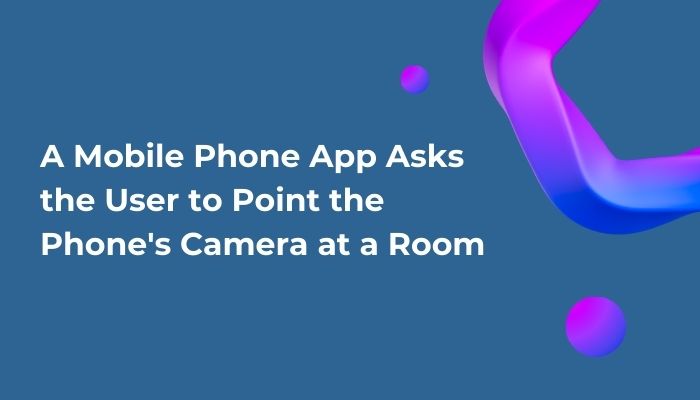- Measures distances between objects to create a virtual representation of the room
- Scans the room to locate and connect to other extended reality enabled devices
- Records a video of the room and automatically adjusts the brightness and color balance
- Optimizes the frame rate of the phone’s display based on the strength of the network
Answer – (A) Measures distances between objects to create a virtual representation of the room
When a mobile phone app asks the user to point the phone’s camera at a room, it is technically creating a 3D (three dimensional) map by accurately measuring the distance between the walls of the room using a LiDAR sensor. You can use this sensor for most AR (augmented reality) applications, and get more immersive experiences within the app.
Light Detection and Ranging technology also known as LiDAR sensor makes use of laser pulses to do this task. In simple terms, the LiDAR sensor calculates the time it takes the laser to come back to the phone after bouncing off the walls. This is not a new technology and we have been using it for years in various special surveying equipment.
Uses of LiDAR Sensors in Smartphones
Now that the sensor has been shrunken down to fit in our smartphones, there are a number of things you can use it for. As mentioned above, the number one thing will be for augmented reality experiences. For example, you can play games that make use of the tech to place fictional objecting into your very surroundings and then you can react with them.
Besides that, in many smartphones, you can use it for better photography results mainly in shots where object depth matters like portraits. By accurately measuring distances, it helps you to create portrait mode effects, where the background is blurred, highlighting your subject. It also helps your camera to recognize the object in front of it faster which results in speedy autofocus.
Other than that, smartphones with LiDAR sensors are a big and important step toward using the full potential of autonomous technologies. The ability to quickly and accurately find out the distances of objects in real time is key for improving the capabilities of autonomous vehicles and robotics.
Nevertheless, with advantages, there are drawbacks too especially when compressing a technology that can fit in your hand. The same can be said for LiDAR sensors because the accuracy of the calculations totally depends on the environment you are in. If there are extreme weather conditions or highly reflective surfaces, you will get inaccurate mapping of your surroundings.
Conclusion
The addition of LiDAR sensor aka Light Detection and Ranging technology has opened a whole lot of new features as well as possibilities. You can get better pictures with more details using your smartphone cameras and you can play games with Augmented Reality. If you want more details, read the answer above.
